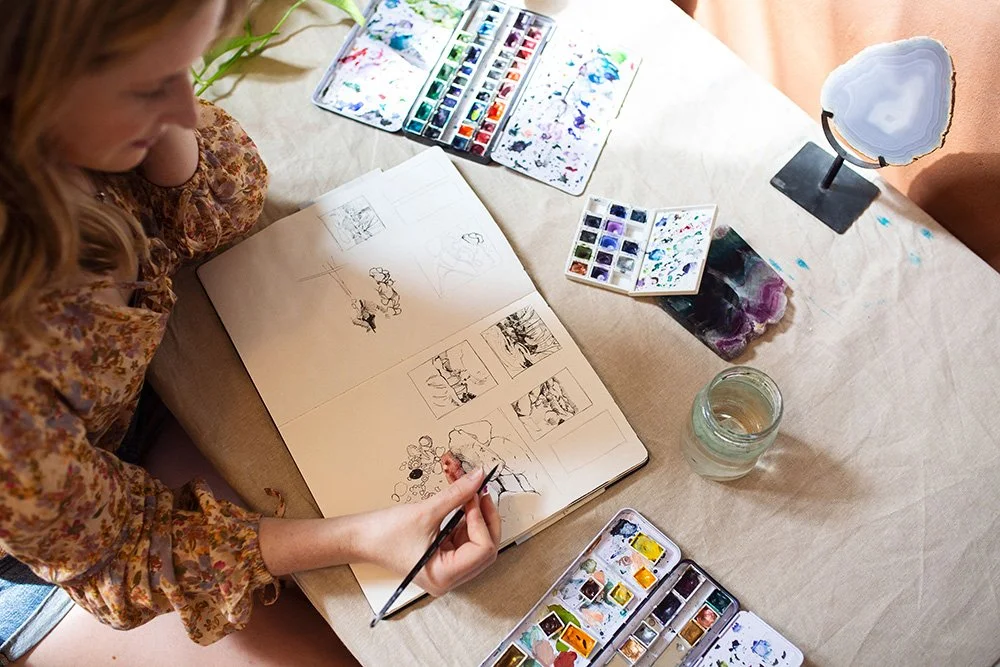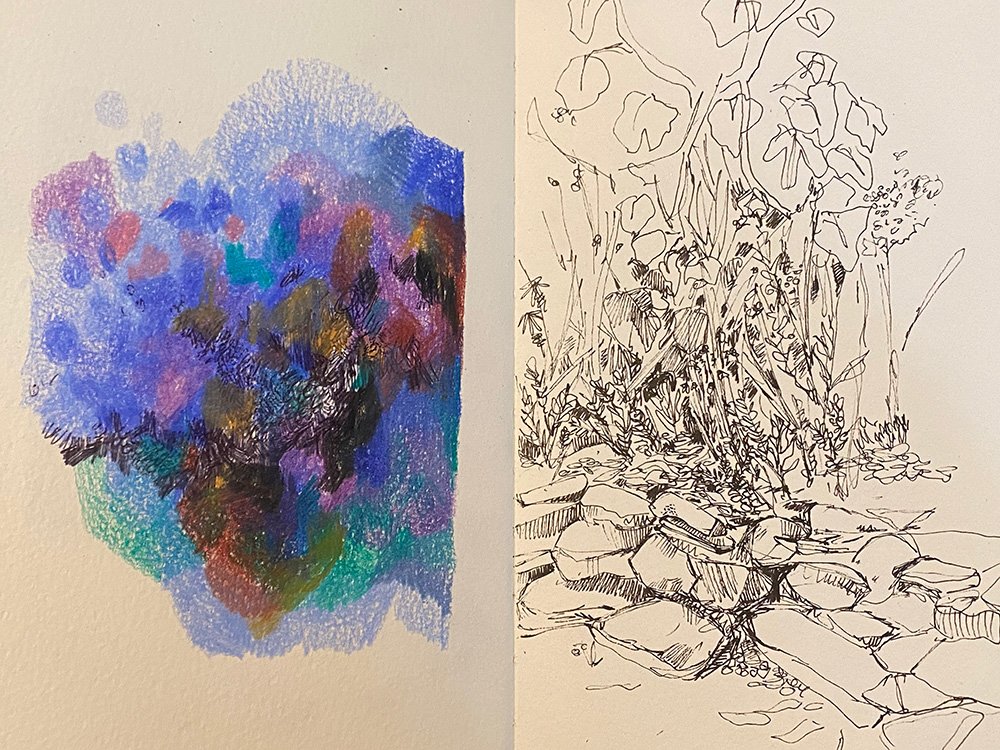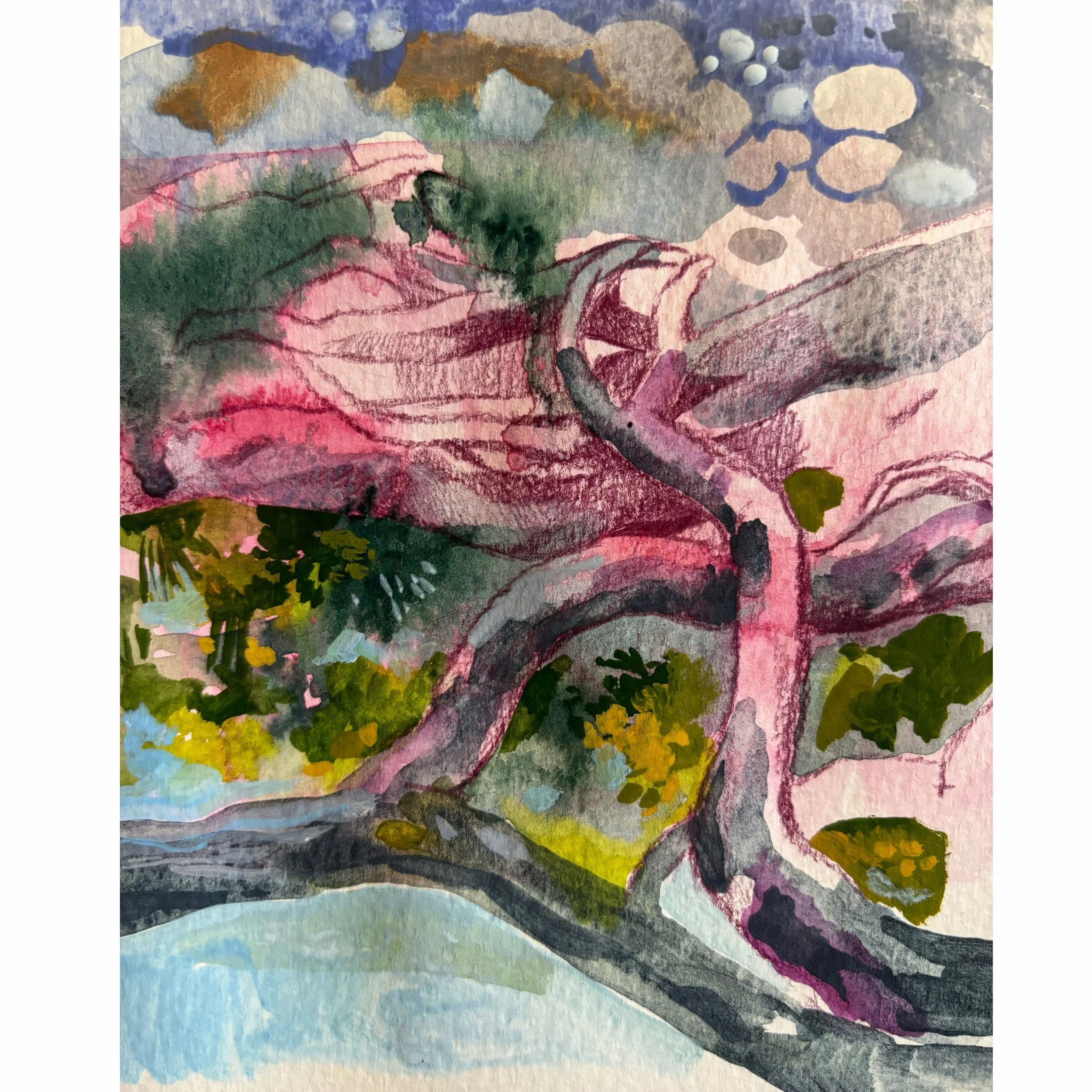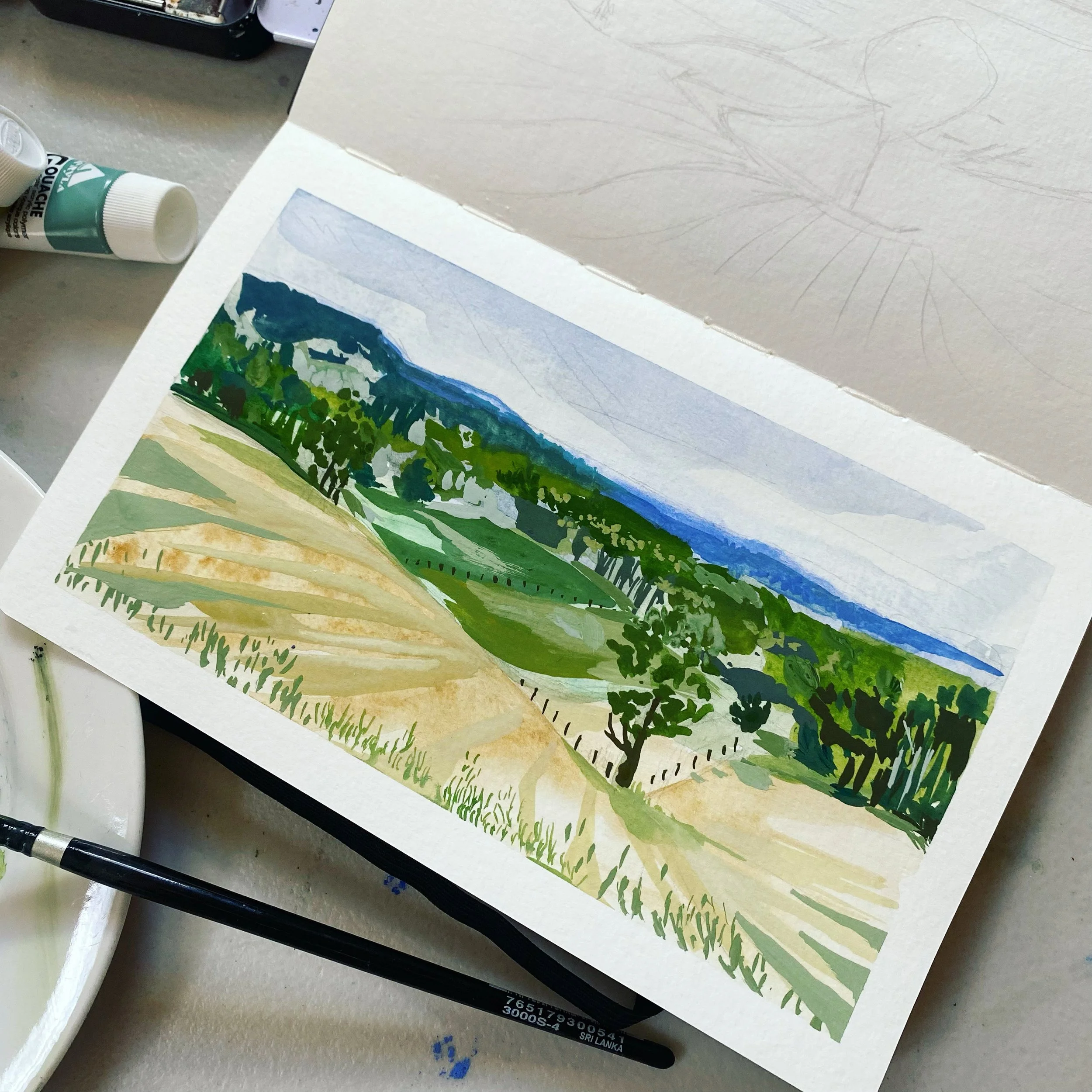The Art of Art Journalling
For as long as I can remember, I have been an avid devotee of my art journal (otherwise known as a sketchbook or visual diary). I gravitate towards the word ‘journal’ as alongside maintaining a journal dedicated to my art, my ideas, I have also maintained a written journal. Both have come instinctively to me and have become more ingrained over the years- setting the foundation for my art practice.
Photo by Stephanie Rose.
So what is art journalling and how does one embrace it as a tool?
In my classes, I frequently emphasise that the purpose of an art journal isn’t about creating something that needs to be instagram-worthy. It works most powerfully as a tool or a place to explore one’s art and creativity, or simply as a place to experiment and play. To build the creative muscle that can snowball towards more confident expressions. It is a shift away from outcome and product to process and learnings.
Below are the five pillars or ways in which I use my art journal that may give you a way of thinking about it differently:
As a tool for discovering your own style:
As I have accumulated sketchbooks over the years, I can witness the through lines that connect my instinctual ways of creating. The way I am inclined to sketch and make marks, the colours I reach for, the themes I am drawn to. All of this is data counters the inclination to only look externally to trends for guidance on what to create. I truly believe it is the foundation of a sustainable art practice. When we invest in our practice in this way, we are embracing the true nature of our creative voice. As wobbly as this may feel initially, our beautifully flawed way of creating and seeing the world is our true nature- which seems ever more important in the environment of AI development. Our humanness is what makes our work relatable.
A page from an art journal from a few years back. On the left, a coloured pencil study and on the right, a quick ink sketch of a corner of my garden.
As a tool for relaxation/meditation:
Another way I like to encourage people to use their journals is simply as a place to play and experiment. You don’t need to be a highly skilled ‘artist’ to explore mediums and make marks. This is a more intuitive way of creating but can be a beautiful way of exploring colour and brush work (if using watercolours). I have frequently witnessed the flow state of concentration across the students in my classes- which is very much like meditation. The comment “the hours just flew by” or “Is it time to pack up already” are common, as the time seems to move in an unusual way in this state. Unlike meditation though, this state is more goal-orientated. According to Mihaly Csíkszentmihályi, psychologist and author of ‘Flow State’, there are a few components that are characteristic of a state of flow.
They are:
A high level of concentration
A sense of control
Decreased rumination or worry
A clear goal and immediate feedback
On the last point, as the pages in your art journal accumulate, you have a record of your marks over time. Tip- date your entries so you can track how regularly you’re contributing to your journal.
More intuitive mark-making, alluding to natural forms, using coloured pencil, watercolour and pen.
As a tool for developing your skill:
Of course, if your intention is to develop your drawing and painting abilities, then the art journal becomes a place to accumulate those hours. I truly do believe that the ability to draw realistically translates into many different outcomes- learning to capture scale, light, shadow and learning to see in a more attentive way.
"Drawing is a skill that can be learned. It takes time and practice, but anyone can learn to draw" Betty Edwards (The New Drawing on the Right Side of the Brain)
Whilst it can be frustrating and seemingly fruitless to work on a piece that ultimately does not work out how we had hoped, it is still useful data. If we can learn to question why something didn’t work out how we hoped by investigating the individual elements (composition, colour, line, shape, proportions etc) then we can gain useful lessons for our next piece. Nothing is ever wasted in this way.
As a tool for idea generation:
Across my studies in visual arts and graphic design, the encouragement to explore ideas in the sketchbook was consistent. I liken it to being graded in a maths test to showing how you arrived at the final answer.. Showing your process is just as important as the final sum.
Thumbnail sketches are a way of getting my ideas for other projects quickly onto the page. This could be for commissions, murals, or ideas for paintings. But rather than going straight to the canvas or the wall, I rely on this process to explore multiple possibilities. Interestingly, as I have moved into working as a full time artist and creative business lady, I don’t have as much time to paint as one might imagine. Having an art journal handy means I have somewhere to stay creative and experimental- even if I only have half an hour to spare.
As a record of travels and journeys:
I don’t believe I am unique in having a large quantity of photos stored on my phone. My compulsion for capturing landscapes or botanical details is a part of my process- many of these images become references for paintings- but when I can intentionally make sketches of the places I am visiting, I am immediately transported back to the essence of that place. We race through our travels but to really sit in a space and make a study in our sketch book forces us to really slow down and take in the details.







